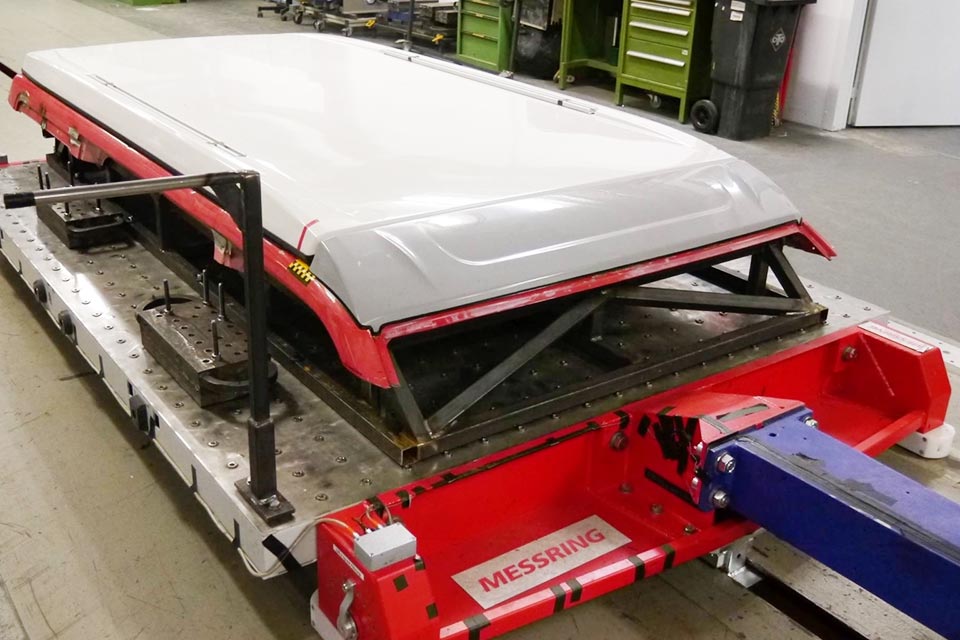The crash test at TÜV SÜD was carried out according to the ECE-R16 with a force of 25 g. An example may be helpful to better understand what effect such a force can have on both people and vehicle: An Airbus A320 taking off undergoes a force of 2.5 g. Passengers feel this when they are pressed into their seats during take-off. The force in the crash test – corresponding to the force in a serious accident - was ten times higher.
A steel frame was specially made for the test in advance. In addition, an SCA-290 roof was glued to an original vehicle chassis. The chassis was welded to the steel frame, which in turn was mounted on a sled. Then the real experiment began. To understand the effects of an accident, the TÜV test engineers first accelerated and then suddenly braked the sled to simulate an impact at 70 km/h. These conditions were like those in of, for example, a vehicle crashing into a tree or the end of a traffic jam. The results of the crash test were consistently positive: the SCA roof remained stable and would not have caused any personal injury in an emergency.
Then, a roof rack mounting system with a roof box was installed on the roof. This was loaded with the maximum permissible load of 50 kg. In this case, the test done was a “city crash”. This test setup simulates rear-end collisions in an urban area. A force of 12g was used. Also, the pop-up roof, roof rack system, and roof box construction all survived the test undamaged.
The wind tunnel test at the Research Institute for Automotive Engineering and Vehicle Engines simulates the negative pressure conditions of high speeds on the motorway. This negative pressure puts stress on a pop-up roof (in this case still using an SCA 290 on a VW T6) - especially in the scissor lifts, pneumatic springs, and closures. To test their stability, three load cells were attached to the inside of the roof shell with the help of a specially assembled aluminum frame and then connected to the research institute’s computer system. This was used to measure the forces acting on the roof as the airflow velocity increased.
In the first test run, the SCA roof was tested with a frontal flow. The speed was gradually increased in 20 km/h increments until a top speed of 240 km/h was reached. The pop-up roof easily withstood the strain - there were no signs of damage or impairment to stability. In practice, crosswind conditions are more critical than a frontal flow, so the vehicle was then tilted by 20° and the speed again increased to 240 km/h. Here, too, no defects could be found. On the contrary, the measured forces were far below the maximum strain an SCA roof can withstand.
The measured data confirms the quality of SCA products, but they also help to make further improvements and thus optimize the safety and functionality of SCA roofs. Overall, both the crash test and the wind tunnel test were a complete success for SCA.
More information: www.sca-daecher.de

